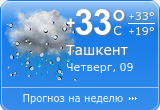


Complex Poi Kalon
Poi Kalon Complex was erected in the 12th–16th century and is one of the central points of sightseeing in Bukhara.
The Poi Kalon complex is located in Registan Square and is translated as "great pedestal."
The Poi Kalon complex consists of Miri Arab Madrasah and Minaret with Kalon mosque.
The Madrasah stands in front of the Kalon mosque and was built in 1535–1536. The madrasah was under the financial support of the nephew of Sheybani-Khan. His name was Ubaydulla-Khan. According to one of the facts, Sheikh was forced to sell thousands of prisoners into slavery in order to build such a monument.
The building includes several stairs with two big rooms and 114 small rooms for students. There is a courtyard with an aivan inside the madrasah.
The first hall was for lectures, and at the same time, it was used as a mosque.
The second big hall served as the burial vault for Abdulla Yemenskiy and Ubaidulla Khan. At the center of the burial vault is the wooden gravestone of Ubaidulla Khan. The Tomb of Miri-Arab is at the head of the gravestone.
The decoration of the Miri Arab madrasah embodies carved mosaic with colored stylized ornament.
Nowadays, the madrasah functions as a spiritual school.
The Kalon Minaret is the main symbol of Bukhara city. It is about 900 years old, and until now, the minaret was never restored.
Minaret Kalon, decorated by a lantern in the form of a cylinder, adorns the minaret. It has 16 arched openings. An inscription on the ceiling says that the eastern architect, Bako, made this lantern in 1127.
Minaret Kalon and Kalon mosque are combined with the bridge. Through circular stairs of 105 steps, visitors can go up to the rotunda of the minaret and admire the beautiful landscape of the city.
The Kalon mosque, which was built in 1514, has a capacity of approximately 12 thousand prayers.
The mosque was constructed in compliance with all existing traditions of architecture at that time: right-angled plan and four aivans in the courtyard.
The eastern entrance has mosaic portals and two blue domes on both sides.
The perimeter of the courtyard was covered with a gallery of 288 domes and 208 pillars.
Our travel agency, «Orient Mice», provides you with pleasure, transport and expert guides who will show you not only Uzbekistan's cities but also the amazing stories about the architectural monuments of Bukhara.


